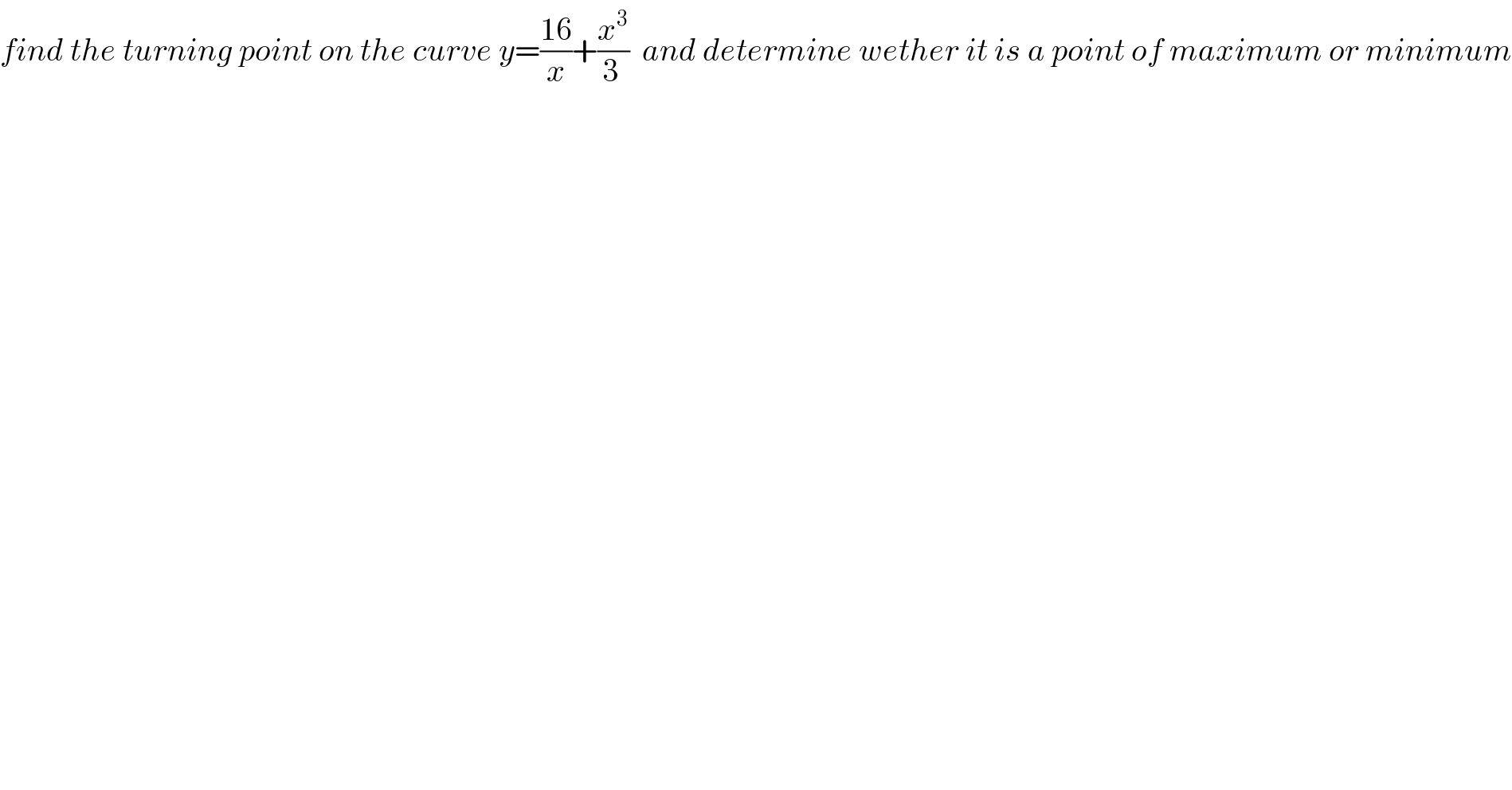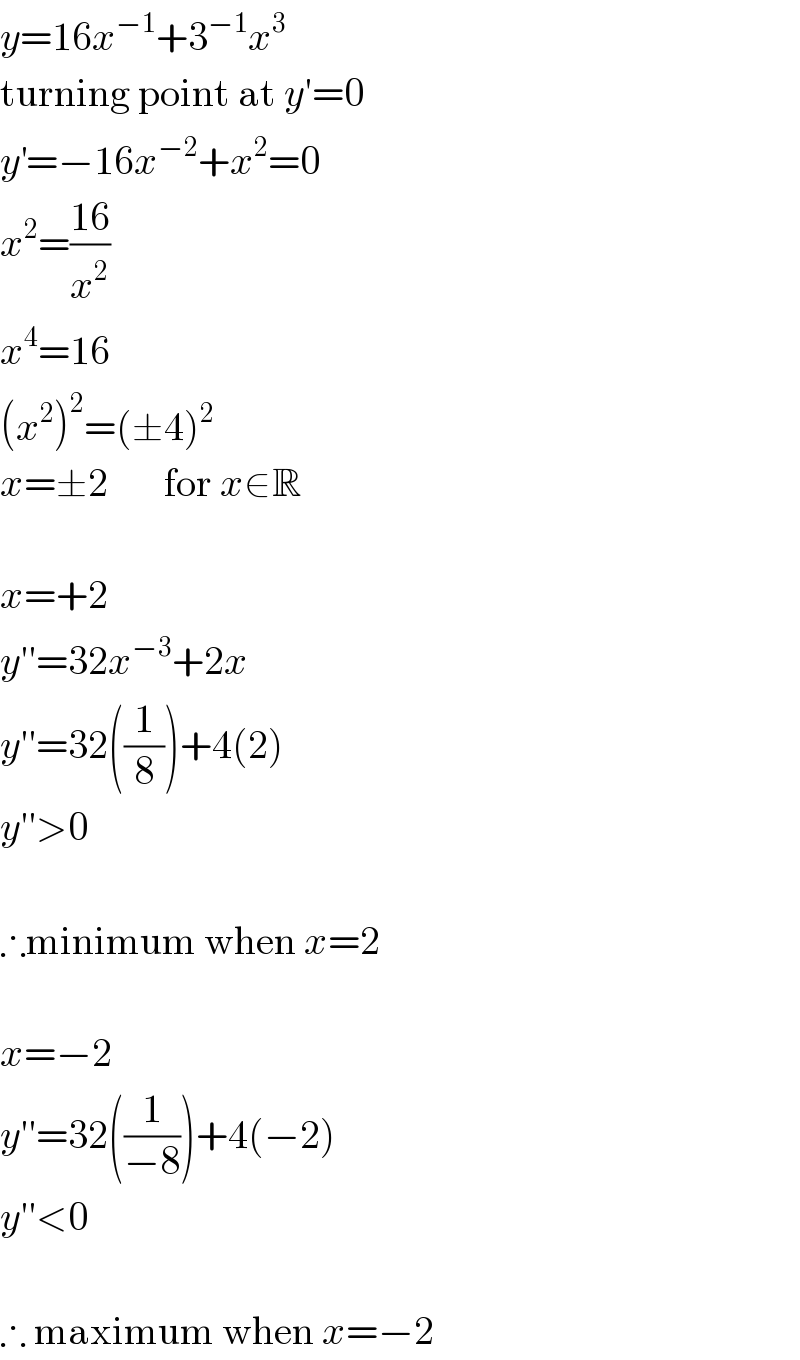
Question Number 7401 by txsnims last updated on 27/Aug/16

$${find}\:{the}\:{turning}\:{point}\:{on}\:{the}\:{curve}\:{y}=\frac{\mathrm{16}}{{x}}+\frac{{x}^{\mathrm{3}} }{\mathrm{3}\:}\:\:{and}\:{determine}\:{wether}\:{it}\:{is}\:{a}\:{point}\:{of}\:{maximum}\:{or}\:{minimum} \\ $$$$ \\ $$
Answered by FilupSmith last updated on 27/Aug/16

$${y}=\mathrm{16}{x}^{−\mathrm{1}} +\mathrm{3}^{−\mathrm{1}} {x}^{\mathrm{3}} \\ $$$$\mathrm{turning}\:\mathrm{point}\:\mathrm{at}\:{y}'=\mathrm{0} \\ $$$${y}^{'} =−\mathrm{16}{x}^{−\mathrm{2}} +{x}^{\mathrm{2}} =\mathrm{0} \\ $$$${x}^{\mathrm{2}} =\frac{\mathrm{16}}{{x}^{\mathrm{2}} } \\ $$$${x}^{\mathrm{4}} =\mathrm{16} \\ $$$$\left({x}^{\mathrm{2}} \right)^{\mathrm{2}} =\left(\pm\mathrm{4}\right)^{\mathrm{2}} \\ $$$${x}=\pm\mathrm{2}\:\:\:\:\:\:\:\mathrm{for}\:{x}\in\mathbb{R} \\ $$$$\: \\ $$$${x}=+\mathrm{2} \\ $$$${y}''=\mathrm{32}{x}^{−\mathrm{3}} +\mathrm{2}{x} \\ $$$${y}''=\mathrm{32}\left(\frac{\mathrm{1}}{\mathrm{8}}\right)+\mathrm{4}\left(\mathrm{2}\right) \\ $$$${y}''>\mathrm{0} \\ $$$$\: \\ $$$$\therefore\mathrm{minimum}\:\mathrm{when}\:{x}=\mathrm{2} \\ $$$$ \\ $$$${x}=−\mathrm{2} \\ $$$${y}''=\mathrm{32}\left(\frac{\mathrm{1}}{−\mathrm{8}}\right)+\mathrm{4}\left(−\mathrm{2}\right) \\ $$$${y}''<\mathrm{0} \\ $$$$ \\ $$$$\therefore\:\mathrm{maximum}\:\mathrm{when}\:{x}=−\mathrm{2} \\ $$
